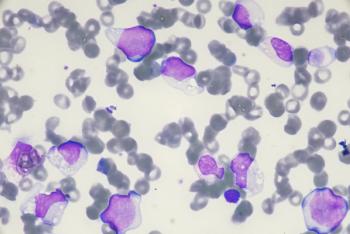
Medical marijuana update: Top 3 things health execs should know
Here’s what you need to know about medical marijuana laws, and what they mean for the healthcare system.
In taking a national perspective on medical marijuana laws, Rafael M. Villalobos, Jr., an attorney at Eckert Seamans’ Philadelphia office, remembers an old adage from law school: “As goes California, so goes the nation.” That’s because, in 1996, California became the first state in the nation to legalize medical marijuana by means of Proposition 215-also called the Compassionate Use Act-which made medical marijuana use legal in the state.
Villalobos
At press time,
Here’s what you need to know about medical marijuana laws, and what they mean for the industry.
1. How the laws work
Michael Vitiello, professor of law at University of the Pacific’s McGeorge School of Law in Sacramento, California, is quick to point out that no doctor in the United States can “write a prescription” for medical marijuana. Rather, if their patient has at least one of the types of permissible conditions that are appropriate for treatment with medical marijuana in the state where that doctor is licensed to practice medicine, their physician can “recommend” that their patient use medical marijuana. At that point, a patient generally receives a card that allows them to procure medical marijuana for use in the treatment of their condition, he says.
Some
· Arthritis,
· Cancer,
· Chronic pain,
· Glaucoma,
· Hepatitis C,
· HIV/AIDS,
· Migraines,
· Multiple sclerosis,
· Parkinson’s disease, and
· Post-traumatic stress disorder.
Laws allowing the use of medical marijuana vary across the country. For example, in some states, patients can have a 30-day supply of medical marijuana; in others, a 60-day supply. In still other states, patients can grow and cultivate marijuana plants for medical use; in others, they can’t legally smoke marijuana for medical purposes but they can use an ointment or a cream, says Vitiello.
2. What’s driving the uptick in legislation
Demographic trends have been changing in support of the use of medical marijuana, says Villalobos. This is the case among younger voters and older voters (especially those experiencing chronic pain) who might have been more conservative about the legalization of marijuana in the past.
Vitiello, who has been teaching law for 40 years, expresses concern that it may, in fact, be too easy for some patients to get a recommendation from their doctor for medical marijuana, given the number of his contemporaries he’s talked to who either have a card that allows them to use medical marijuana legally or those who are interested in the legal use of marijuana for the treatment of arthritis pain, for example.
Still, the reality of managing patients’ pain in the midst of a very serious opioid epidemic means medical marijuana could be appropriate for some patients, he says.
3. Special considerations for providers
There are several issues healthcare executives must consider when it comes to medical marijuana. Here are some of the most noteworthy:
· Federal policies. The federal government considers marijuana-just like heroin and LSD-to be a Schedule I drug under the U.S Controlled Substances Act. While the Department of Justice provided
· State-specific requirements. Villalobos advises healthcare executives to keep apprised of state laws on medical marijuana. For example, in Pennsylvania, where he practices, a physician has to register with the state if he or she wants to participate in the medical marijuana program-and that’s after taking part in a four-hour training session.
· Documentation. After a patient has been certified by their doctor as having a medical condition that qualifies them to use medical marijuana, the doctor’s recommendation for medical marijuana must be given to the patient and the patient’s record must also be updated. Once in receipt of a medical marijuana card, the patient can to go to a dispensary and receive medical marijuana.
Kappel
· Prescription rules. It’s important to consider the side effects and benefits associated with medical marijuana, as opposed to other alternatives, says Josh Kappel, partner at Vicente Sederberg LLC’s Denver office. “[Medical marijuana] doesn’t have that many contraindications with other drugs, but this is something to look into.”
· Ingestion guidelines. Healthcare executives may need to determine if it’s appropriate to provide a space for patients to ingest medical marijuana, says Kappel. Providing a safe, legal place for patients to ingest medical marijuana could be a positive alternative to the “massive epidemic of opioid abuse and addiction,” he says.
Still, Villalobos cautions against providing a “safe space for actually utilizing medical marijuana, since that means [healthcare facilities] are more actively promoting and facilitating [its use].” Accidents, trips, and falls are incidents healthcare facilities need to consider when medical marijuana is consumed on their premises, and that could hypothetically create a liability for the organization, he says. It’s also important to consider that many states don’t allow providers to store medical marijuana on their premises, he adds.
· Liability. Healthcare organizations need to have the appropriate level of coverage and indemnification if claims are lodged against them as a result of their medical marijuana policies, says Villalobos.
Future outlook
Kappel describes marijuana as one of the most researched drugs in our society. A quick search on PubMed yields 25,000-plus studies on marijuana, he says. Much of the focus of those studies has been on the harm associated with marijuana. Kappel calls for more research to be done on the health benefits, but it’s been difficult because previously, the only place where marijuana could be grown for research purposes was the University of Mississippi. That changed in 2016 when the Drug Enforcement Administration announced that other growers could apply for licenses to grow marijuana for research purposes, but said that the rules to qualify would be strict.
Aine Cryts is a writer based in Boston.
Newsletter
Get the latest industry news, event updates, and more from Managed healthcare Executive.






















































